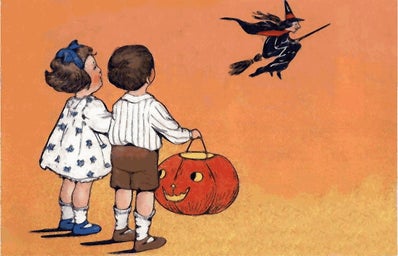What do Elphaba, Hermoine Granger, Ursula, Sabrina Spellman and Bonnie Bennett all have in common? They’re all witches, of course!
Now that October is finally here, I’m reminiscing the glorious Halloween costumes from my childhood. Perhaps it’s the fact that I dressed as a witch for five years in a row that’s inspiring this witch-themed article. But aren’t witches just so cool? Television, books, movies and even some parts of history have produced some amazing witches with all sorts of relatable personalities, inspiring stories and cool powers. Witches first appeared in history as early as Biblical times, with mentions of witches in Exodus and 1 Samuel, and continued to make appearances throughout the ages. Everyone remembers learning about the notorious Salem Witch Trials in elementary school history class, and the 1990s brought us witches in the form of hit TV-sitcoms, like Sabrina the Teenage Witch, Charmed and Buffy the Vampire Slayer.
Back in the day, witches were devilish, savage creatures. Time, however, has allowed the idea of witches to morph into an entirely different image: the 21st century has introduced witches as strong, courageous and good-willed women (and men!). This is evident in the fictional content we’ve all consumed, such as our daring Hermione Granger from the Harry Potter series, but in light of entering spooky season, I couldn’t help but wonder what modern day witchcraft looks like, if it even exists.
Luckily, the internet appeased my curiosity and I found lots of interesting information about what the witches of today are up to. Here are five interesting things I discovered:
- Modern Witchcraft is More Like Self-Care
-
In an article by L.A. Magazine, readers are introduced to Carrie Bradshaw, a modern-day witch living in L.A. She’s the author of Craft: How to Be a Modern Witch, where she approaches witchcraft as a fresh form of self-care. According to Bradshaw, “In a heavily politicized society, witchcraft means reclaiming our bodies, sexuality and selves; it means reclaiming our magick. We do this through spells, through working with energy and the subtle body, through meditation and cleansings, through being conscious of the energy we give and receive, among many other things.” Bradshaw says practicing witchcraft has become more about wellness and enhanced spirituality than the stereotypical casting of spells; witchcraft has never been about doing bad, it’s always been about doing good and aligning with the earth.
- There Are Podcasts and Online Columns for Witches
-
Okay, I’m definitely feeding into the archaic stereotype that witches live in huts in the middle of forests without access to the internet on this one. As it turns out, the world’s witches do in fact use the internet and you could probably find a few on social media. I even found a podcast, The Witch Wave, that discusses “magic, creativity, and culture” — and it’s available on Spotify! Any quick search on the internet also reveals the countless blogs and other online resources available for witches to improve their practice.
- There are 16 Different Kinds of Witches
-
This reminds me of that “sixteen personalities” test we all took with our friends in high school. According to an article by Thought Catalog, there are various types of witches and the type you are depends on what you are most drawn to. For instance, there are Dianic witches, who apparently are the most feminist of the witch types, Cosmic witches, who have an affinity for the stars and astronomy in their practices and also Kitchen witches, who often use cooking in their craft and prioritize having a nurturing home. There’s plenty more types discussed in this article, from Sea witches to Green witches (think Earth, not Elphaba). I suppose if I were any, I’d simply want to be a cool witch.
- This Photographer Set Out to Capture the Modern Faces of Witchcraft
-
In 2018, Frances F. Denny showcases a portrait series called “Major Arcana: Witches in America” in which she exposes the diverse ages, social classes, ethnicities and practices of various women who call themselves witches. According to an article by The New Yorker, the series intends to “avoid easy formulas” and demonstrate the individuality witches have. It’s quite a cool collection of photos!
- During the Pandemic, Witches Also Met Over Zoom
-
Once again, I find this quite funny, and I apologize to the witch community for mistaking them as strangers of the internet. But yes, it’s true: an article by Insider discusses how witches utilized Zoom, just as we students did, for their spell-casting meetings and workshops back in the spring. The article explains that many witches are now turning to the internet to continue to connect with digital audiences and share their knowledge.
After reading a slew of articles about modern day witches, I suppose I do have a new appreciation for what this magical community stands for: self-love, respect for nature, bettering others. Of course, there’s so much more to this community to learn about, but all in all, it would seem that the real deal isn’t so different from the powerful witches we see on TV and in literature. And with that, I think we could all try to be a bit witchier!
Follow HCND on Twitter, like us on Facebook, Pin with us and show our Instagram some love!


